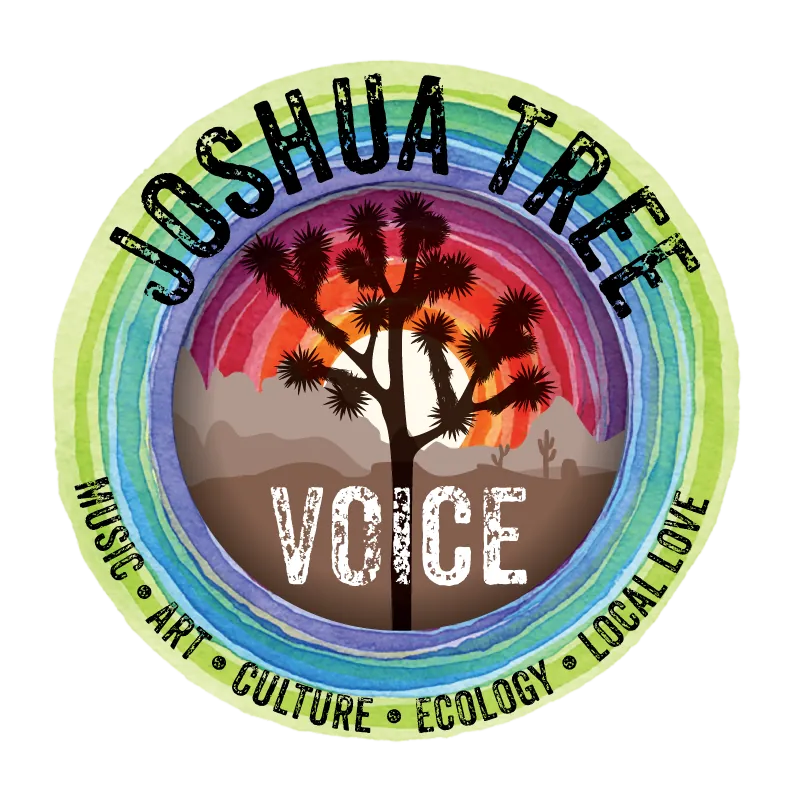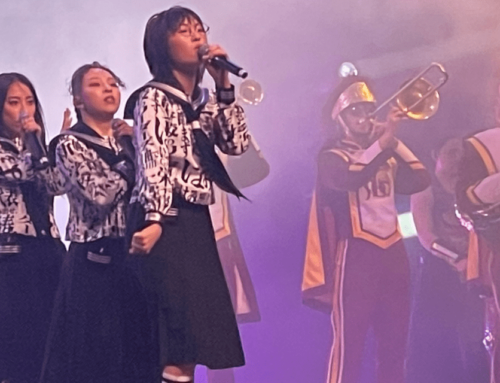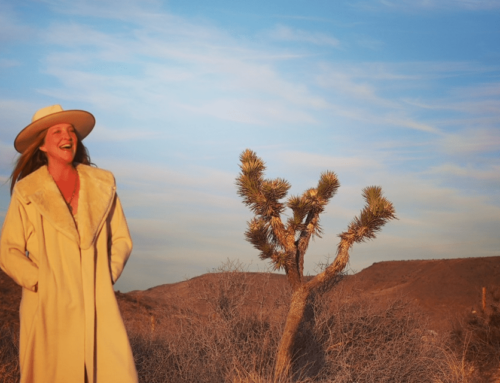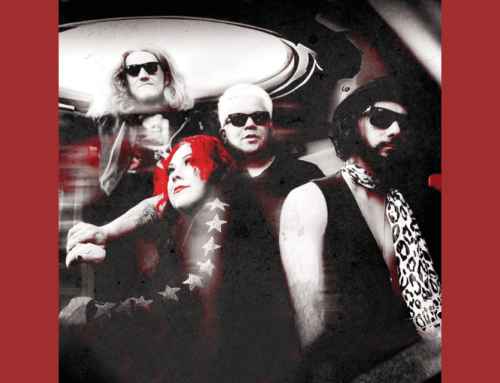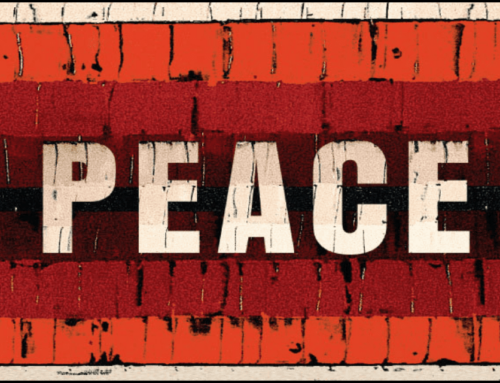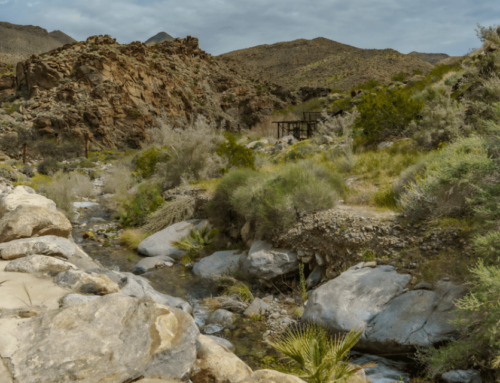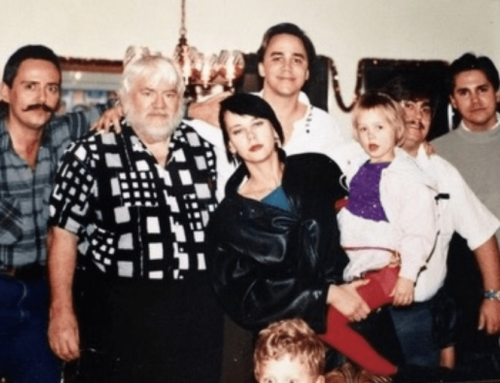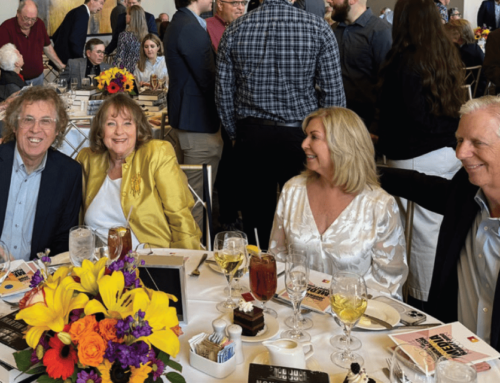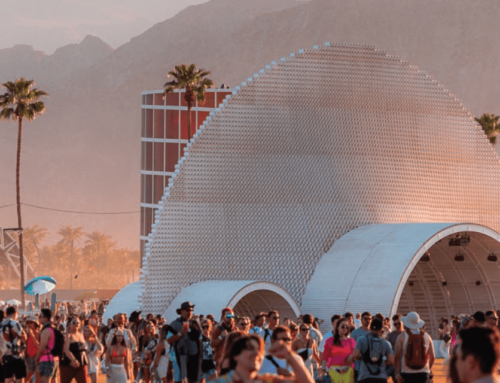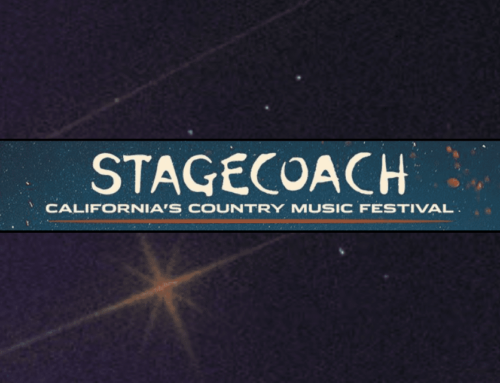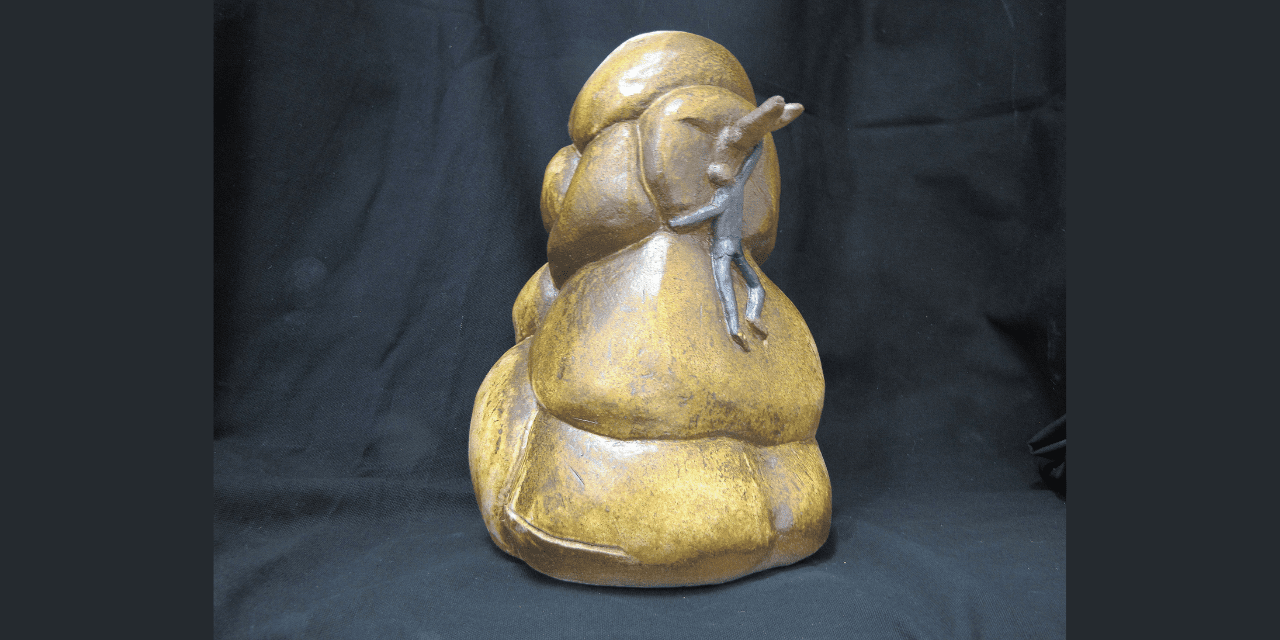
Ed Keesling Ceramic Artist and Man of Substance
By Katie Nartonis
“I have a shirt that says, ‘Without Art, the Earth is just Eh.’ For me, that about says it all.”
– Ed Keesling
“I have a shirt that says, ‘Without Art, the Earth is just Eh.’ For me, that about says it all.”
– Ed Keesling
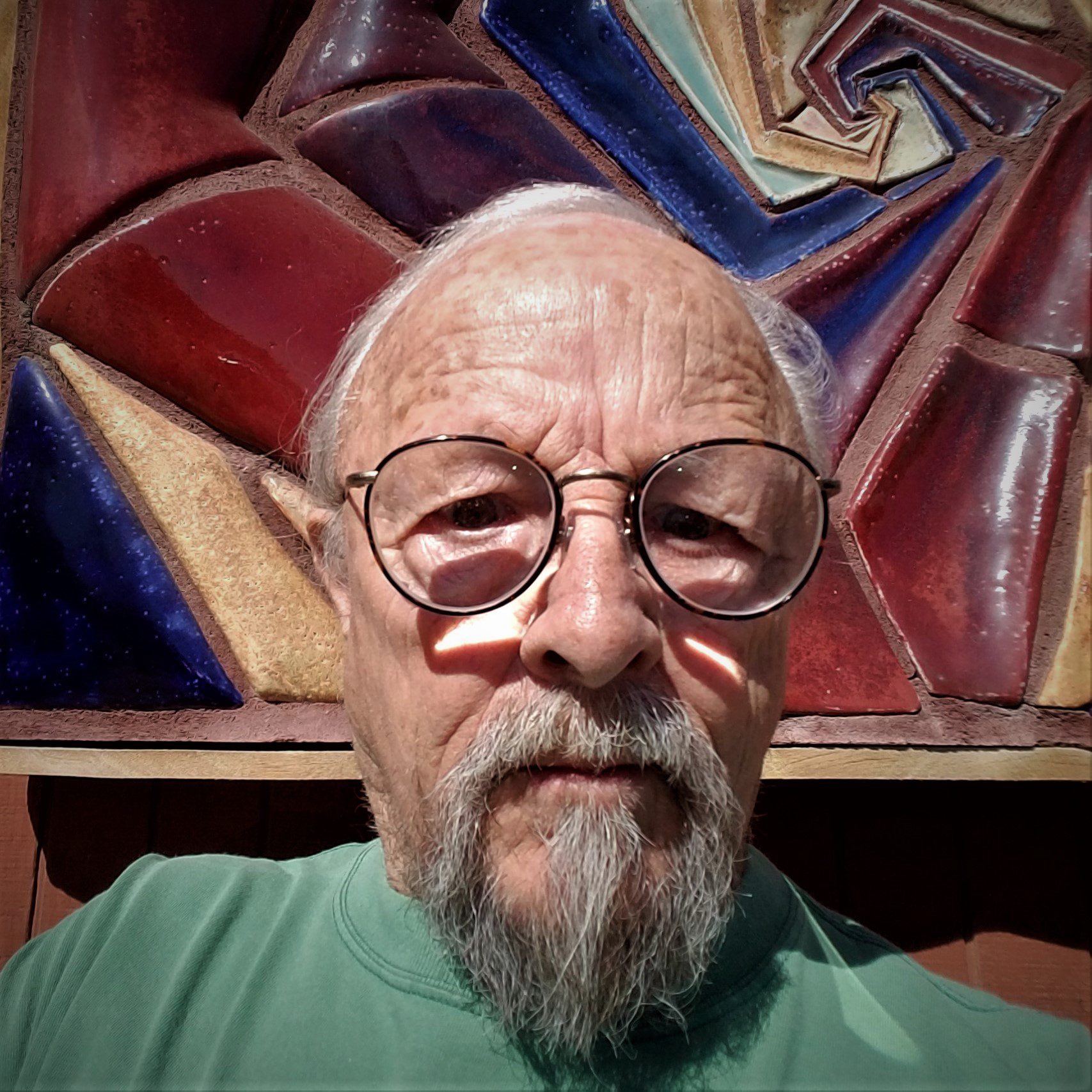
JT Hiker (Cover photo):
“This piece came from a story that I heard about a person hiking in the park who slipped and fell off of a cliff, grabbing a branch to save himself. When he looked up, he could see no way to climb back up, and when he looked down, he could see no way to climb down. In desperation he called out “God help me”. A voice came out of the sky saying, “ Let go of the branch, and I will lift you up.”
Local high desert ceramicist, arts advocate and former educator Ed Keesling grew up in Whittier, California. “My (artistic) path started back in Elementary school when I started drawing. By junior high, art was my favorite elective.” Like many successful artists, Ed’s creative future was encouraged by an engaged teacher. He recalls that he was first introduced to the wider history and practice of art by his high school art teacher, Yoshio Nakamura.
Ed went on to study painting at Cerritos College, followed by earning a studio art minor at California Lutheran University. After college, like many of his generation, he spent over five years (1966-1972) serving in the Peace Corps – both in India and Uganda. His education didn’t stop there, later he earned a masters of fine art from Antioch University with a degree in ceramics.
Ed’s journey to the desert is an interesting story. In the 1950’s, he had an uncle who homesteaded in Joshua Tree and the Keesling family visited him from time to time. In the late 1960’s, Ed’s folks bought a weekend cabin in Yucca Valley. “When I was home on leave from the Peace Corps, I visited the cabin and fell for the high desert. I loved the landscape of rocks, Yuccas and Joshua Trees as well as the wide-open spaces under a bright blue sky.”
“Since moving to Yucca Valley in the 1980s, I have been inspired by the unique, wide-open spaces, rock formations, wildlife, and the plants in our hi desert environment.”
After the Peace Corps, and having returned to the United States, Ed learned about a new art school Antioch University opening in Columbia, Maryland. Ed recalls, “when I went to check it out and apply for painting classes, the director told me that the painting studios were not ready, but if I was willing to help as an interior finish carpenter, they would trade some ceramic classes for work on the building. Once I got into the ceramic classes, I was hooked, and never looked back.”

Covid Totem:
“The Covid totem is about the Covid pandemic. The bottom character represents the present with a masked face. Above that is the historical figure of the plague doctor with the mask filled with herbs to block the smell of death during the Black Death. On top is the skull representing death, and the Vulture on top disposes of the carrion.”
Ed believes deeply in giving back to his community. “While I was growing up, my folks were always volunteering for school and church projects, so I guess it rubbed off. The Peace Corps gave me a great deal of satisfaction – being involved in community development. Volunteering has been a great way to get to know people and a source of satisfaction in being of service to the community.”
Later, he got involved with the California Art Education Project, and Keesling served as the Art Coordinator for the Morongo Unified School District. In that role, he won $100,000 in grants for the district art program to develop art standards for the elementary schools, and to do teacher training to enable elementary teachers to be able to teach to the new standards.” He has served as Education Director and President of the 29 Palms Art Gallery board, past President of the MBCAC (the Morongo Basin Cultural Arts Council) and currently serves as an elected Director of the newly formed Hi-Desert Artists in Yucca Valley.
“I believe that the colors of my glaze’s stoneware clay, and the shapes of many of my pots reflect the nature of the desert.”
“I believe that the colors of my glaze’s stoneware clay, and the shapes of many of my pots reflect the nature of the desert.”
The history of the high desert has inspired Ed’s work. “When I first arrived here, one of the Yucca Valley traditions was Grubstake Days, named for the early prospectors who came to the area to mine for gold.” Inspired by the tradition of California miners, also known as ‘sourdoughs’ he began making sourdough jugs in the stye of traditional early American potters.
“Back in the days before cheap glass and plastic, American potters did a thriving business making all sorts of utilitarian ware, including batter jugs which people kept on the back of their wood stoves to have “live” batter for bread and biscuits each day. I’m also inspired by the native American Indians who lived in the area, especially around the 29 Palms Oasis. The Serrano, Chemehuevi, and Cahuilla all lived there from time to time. Their unique designs are found on pottery, baskets, and rock art, and occasionally on my pottery.”
Ed’s pottery business, Ed Keesling Clayworks has been in business since 1980. He has shown his ceramic work at craft shows and art galleries in Maryland, Washington D.C, and throughout the Morongo Basin. This past year, 2023, marks his 13th year as part of the Open Studios Art Tours. Locally you can find his work for sale at the 29 Palms Art Gallery, the Rainbow Stew giftshop in Yucca Valley, the Soul Connection in Joshua Tree and at the Joshua Tree National Park gift shops. The National Park reached out to Ed and together they came up with the design of the Joshua Tree mug. “The mugs have a blue glaze to reflect the sky and an incised Joshua Tree design on the front carved into the raw clay, that reflects the colors of the sand and stones.”
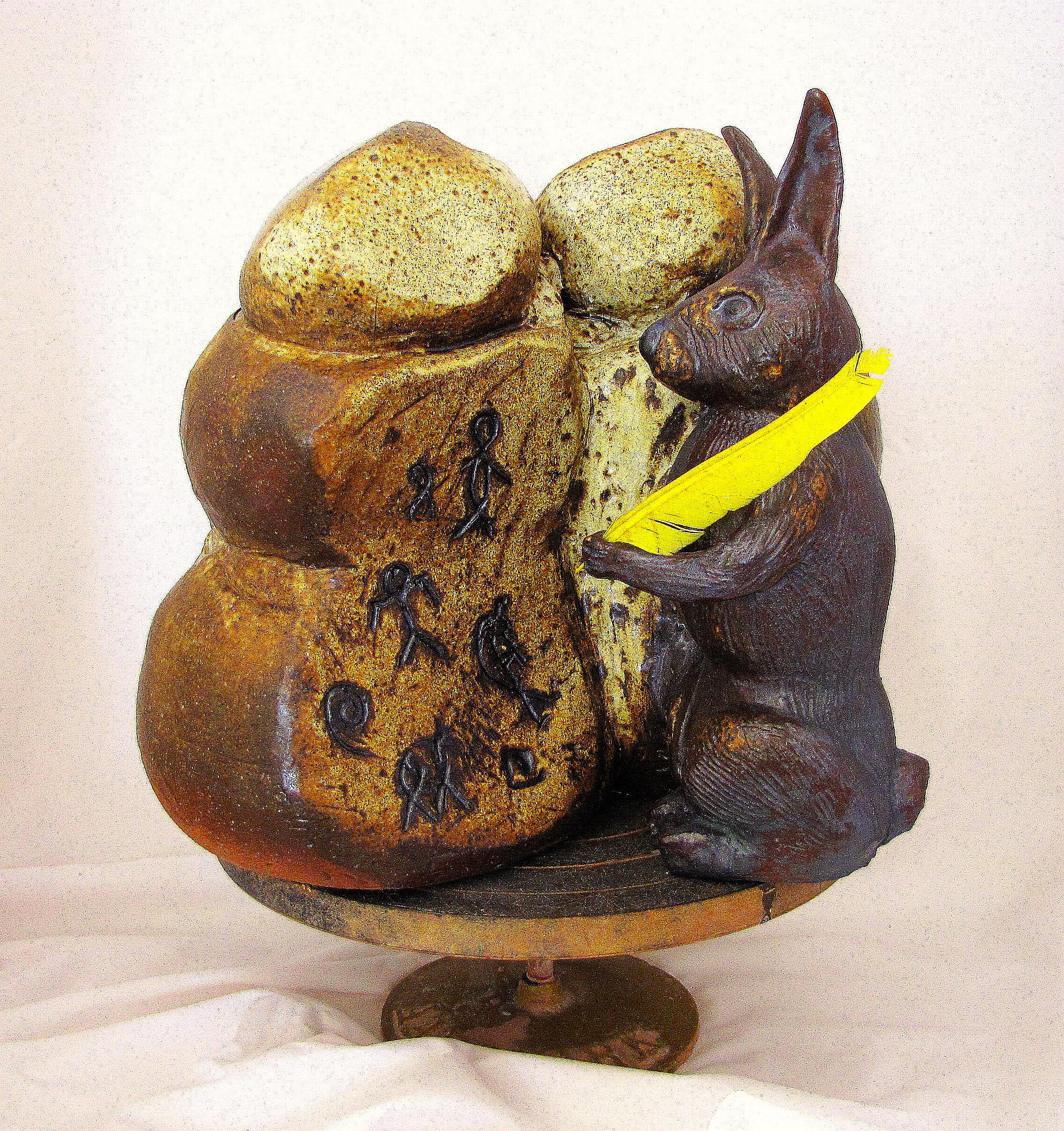
Animal Farm:
“The Trump figure with a pig nose, and hoofs and a piggy tail is about Napoleon who is the head pig in Animal Farm, by George Orwell. During Trumps first few years in office, I was struck by the parallel between the way he operated in the Presidency, and Napoleon in Animal Farm.”
Following his retirement in 2008, Ed has refocused his full attention on ceramics. In the spring of 2011, Ed moved into a new studio on Yucca Mesa where he celebrates what he calls ‘the joy of living in the desert.’ He defines this joy as his daily practice – throwing pots on the wheel, creating ceramic tiles, murals, and by making coil sculpture using the “wedged coil” process – a continuation of his master’s thesis study. Wedging refers to the kneading of the clay to remove air bubbles and create a consistent texture. Coiling is the creation of long thin rounded “coil” sections of clay that are then used to build up the shape of the finished piece. The outside surface of the clay object is then smoothed over to create a flat surface.
In Ed’s view, the visual and performing arts are critical tools for communication of our history, culture, and spirituality. The desert community is blessed to have such a dedicated and thoughtful man such as Ed Keesling in our midst – he is an artist, and community member, of deep moral character and substance.
